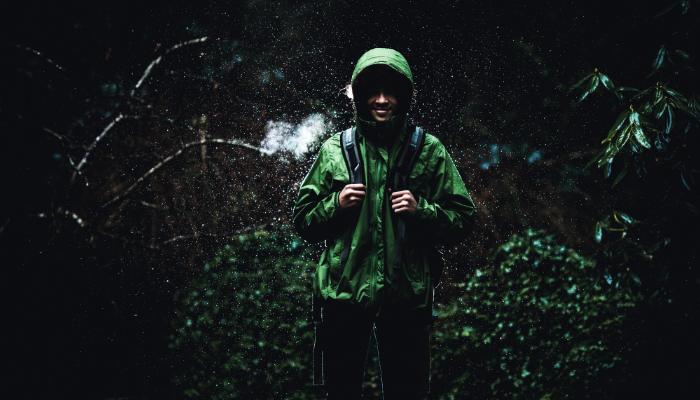Winter hiking and mountaineering require a very different set of gear compared to summer or autumn trails. When temperatures drop below freezing, snow covers the terrain, and daylight hours shrink, your backpack becomes more than just storage — it becomes a survival tool.
The right backpack ensures you can safely carry extra layers, food, water, avalanche safety gear, crampons, ice axes, and sometimes even snowshoes. Unlike summer daypacks, winter hiking backpacks must withstand cold, moisture, and heavy loads while keeping your gear accessible in challenging conditions.
In this guide, we’ll cover:
-
Key features of winter backpacks
-
Differences between winter hiking and mountaineering packs
-
Capacity recommendations
-
Essential features (durability, comfort, attachment points, waterproofing)
-
Best winter backpack models for 2025
-
Tips for choosing the right pack for your adventure
By the end, you’ll know exactly which backpack to trust for your next snowy expedition.
Key Features of Winter Backpacks
Winter conditions place extreme demands on your gear. A suitable winter hiking or mountaineering backpack should have:
Larger Capacity (35L–70L)
-
Winter clothing and gear take up more space (insulated jackets, gloves, crampons, thermos).
-
Short winter hikes: 35–40L pack.
-
Multi-day mountaineering: 50–70L pack.
Durable and Weather-Resistant Materials
-
Ripstop nylon, Cordura, or Dyneema for abrasion resistance.
-
PU-coated fabrics or integrated rain covers for water resistance.
-
Zippers and buckles are designed for low-temperature durability.
Attachment Systems for Technical Gear
-
Ice axe loops
-
Crampon pockets
-
Snowshoe/ski attachment points
-
Helmet carry systems
Comfort and Suspension System
-
Padded, adjustable hip belts to carry heavy winter loads.
-
Ventilated back panel to reduce sweat freeze.
-
Adjustable torso length for better fit with layered clothing.
Accessibility in Cold Weather
-
Glove-friendly zippers and buckles.
-
Side or front access in addition to top-loading.
-
Large pull tabs for quick gear retrieval.
Differences Between Winter Hiking and Mountaineering Packs
| Feature | Winter Hiking Backpack | Mountaineering Backpack |
|---|---|---|
| Capacity | 30–45L (day/overnight) | 50–70L (multi-day climbs) |
| Weight | Lightweight, less structured | Heavier, reinforced frame |
| Attachment Points | Limited (basic pole loops) | Multiple (ice axe, crampons, rope straps) |
| Durability | Moderate (nylon/polyester) | High (Cordura/Dyneema) |
| Use Case | Snow hikes, winter camping | High-altitude expeditions, technical climbs |
Recommended Capacity by Adventure Type
-
❄️ Winter Day Hike (6–8 hours): 30–40L
-
🏔 Overnight Winter Trek: 45–55L
-
🧗 Multi-Day Mountaineering Expedition: 60–70L+
Best Outdoor Backpacks for Winter Hiking and Mountaineering (2025 Picks)
Here are the top models recommended for 2025:
1. Osprey Aether 65 (Best Overall for Multi-Day Winter Trips)
-
Capacity: 65L
-
Why it’s great: Exceptional comfort, adjustable suspension, durable design.
-
Best for: Multi-day mountaineering and long winter treks.
2. Deuter Aircontact Ultra 50+5 (Best for Heavy Loads)
-
Capacity: 50+5L
-
Why it’s great: Reinforced structure for carrying ropes, crampons, and snow gear.
-
Best for: Alpine climbing and winter expeditions.
3. Gregory Baltoro 65 (Best for Ergonomics)
-
Capacity: 65L
-
Why it’s great: The Advanced hip belt system distributes weight evenly.
-
Best for: Long treks with heavy winter loads.
4. Black Diamond Mission 45 (Best Technical Pack)
-
Capacity: 45L
-
Why it’s great: Compact yet designed with gear loops, helmet carry, and durable Cordura.
-
Best for: Ice climbing and alpine mountaineering.
5. Arc’teryx Alpha AR 55 (Premium Mountaineering Choice)
-
Capacity: 55L
-
Why it’s great: Lightweight Dyneema, minimalist alpine design, weatherproof.
-
Best for: Serious mountaineers needing durable yet lightweight packs.
6. Osprey Kamber 42 (Best Ski & Snowboard Pack)
-
Capacity: 42L
-
Why it’s great: Designed for backcountry skiing with ski/snowboard attachments.
-
Best for: Winter hiking and ski touring.
How to Choose the Right Backpack for Winter Hiking
-
Match Capacity to Trip Length – Don’t bring a 70L pack for a 4-hour hike.
-
Prioritize Comfort – Try on packs with winter clothing before buying.
-
Look for Technical Attachments – Ice axe loops, crampon pouches, ski straps.
-
Check Weatherproofing – Integrated rain covers or water-resistant materials.
-
Test Accessibility – Ensure zippers and buckles can be used with gloves.
Winter Backpacking Tips for Extra Safety
-
Always pack extra insulation layers and a thermal blanket.
-
Keep water bottles upside down to prevent freezing.
-
Use dry bags inside your pack to protect clothes from snow moisture.
-
Store snacks in easily accessible outer pockets.
-
Carry an avalanche beacon, probe, and shovel if going off-trail.
Future Trends in Winter Backpack Design (2025–2030)
-
Ultralight Materials: Widespread use of Dyneema for a high strength-to-weight ratio.
-
Smart Packs: Built-in GPS, avalanche sensors, and solar charging panels.
-
Eco-Friendly Options: Backpacks made from recycled and sustainable fabrics.
-
Modular Systems: Detachable compartments for day hikes vs. long expeditions.
Conclusion
When it comes to winter hiking and mountaineering, your backpack is not just a container for gear — it’s a survival tool.
-
For day hikes, go with a 30–40L lightweight winter pack.
-
For overnight treks, choose a 45–55L pack with strong suspension.
-
For multi-day expeditions or mountaineering, invest in a 60–70L+ technical pack with durable materials and gear attachment systems.
By carefully matching your backpack to your trip length, terrain, and conditions, you’ll stay safe, comfortable, and fully prepared for any winter adventure.



